 She never has unprotected sex. 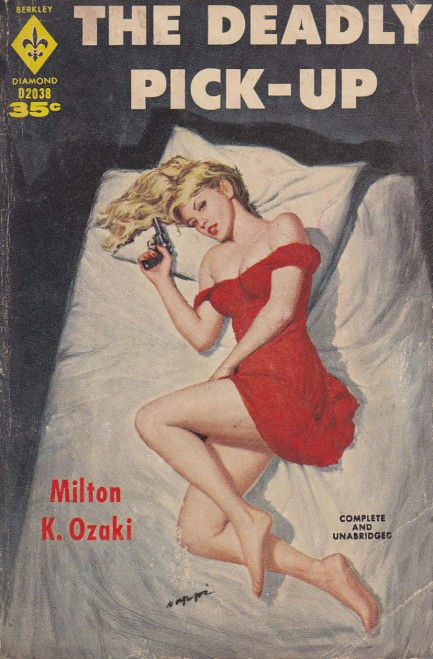
Above: an alternate cover for Milton K. Ozaki's 1952 thriller The Deadly Pick-Up. We use “thriller” loosely, because it wasn't a very involving book. But both covers are excellent. This one is by Rudy Nappi. You can see the other, by an uncredited artist, here.
 Fatal Manhattan pile-up caused when multiple cabs simultaneously try to pick up same fare. 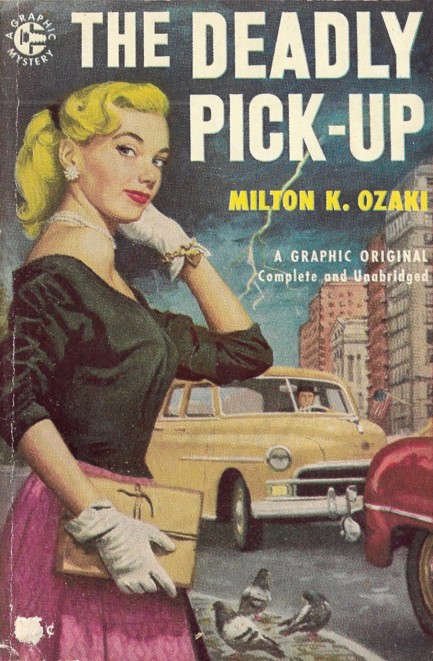
The last Milton K. Ozaki book we read left us cold, but because 1952's Deadly Pick-Up has beautiful cover art we decided to give it a shot. Graphic Books during the early 1950s routinely had brilliant covers. About a paragraph into reading this we realized it was the same Ozaki as before, but we forged ahead into the tale of a man wrongfully suspected of a woman's strangulation, who must solve the crime before he's snared by the cops. The dead woman's sister, a private detective, helps him out, and they discover the reason for the killing was $60,000 in counterfeit bills, which turn out not to be fake after all.
In terms of specific problems with the book, we'll highlight a couple. First, the sister detective is immediately pushed by Ozaki into a background role, protected and sidelined by the main character. We'd be okay with it if the hero were a qualified tough guy. But he's a damned insurance salesman. It seems as if Ozaki was imaginative enough to create a female detective, but not imaginative enough to conceive of her refusing to let some rando tell her how to do her job. In an era where other writers had already created tough and competent women detectives it was simply a whiff. A second issue, more serious in our view, is the tortured similes Ozaki uses. Some choice examples:
With his bat in hand he hurdled the bar as gracefully as a ballet dancer sailing over a papier mâché bush.
He kept watching me as though my nose were an independent organism likely to do tricks.
Thinking was like trying to bounce a rubber ball in a puddle of wet, sticky mud.
Crime writing and hard boiled similes go hand-in-hand, but you have to do better than that. Ozaki does manage to create a few unusual moments, including steering the investigation into a gay bar—where the hero is physically attacked twenty-against-one when he's assumed to be a morals spy. The gay characters in the book do not—obviously—fare well descriptively. That's never fun to read, but it's what you have to expect considering the time period. Ozaki would not have earned our future trust regardless. He just doesn't write well. But we're glad to have the book because the cover—uncredited, sadly—is aces.
 She's dangerous, untrustworthy, and cruel—but hey, what beautiful woman doesn't come with a little baggage? 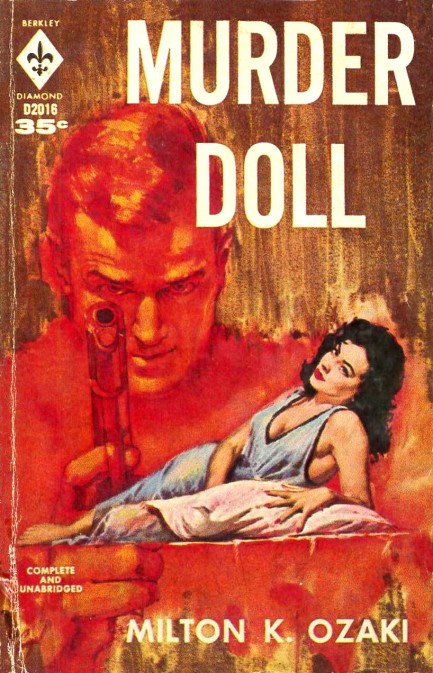
We'd been meaning to get around to reading Milton K. Ozaki, aka Robert O. Saber for a while, and when we came across Murder Doll we took the plunge. Plotwise, Chicago private eye Carl Good finds himself in the middle of an out-of-town gangland takeover. This is no ordinary invasion—the head honcho is rumored to be the beautiful ex-mistress of an eastern mobster. The problem is nobody knows exactly who she is. Good is hired to find this bombshell criminal, as he coincidentally acquires both a hot new secretary and a hot new girlfriend. Hmm... Maybe one of them is not what she seems. This is a mostly unremarkable mystery that even a trip to a nudist colony can't elevate, but it started well, with a clever nightclub murder, and it's very readable in general, so we'll give Ozaki a pass for this lusterless effort and hope he dazzles us next time. It came from Berkley Books in 1952 and the cover artist unknown.
 Why on Earth are you bringing up that till-death-us-do-part stuff now? Neither is us is going to die for a long time. 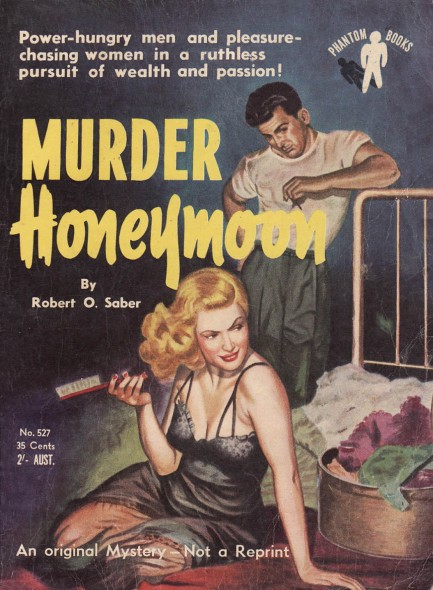
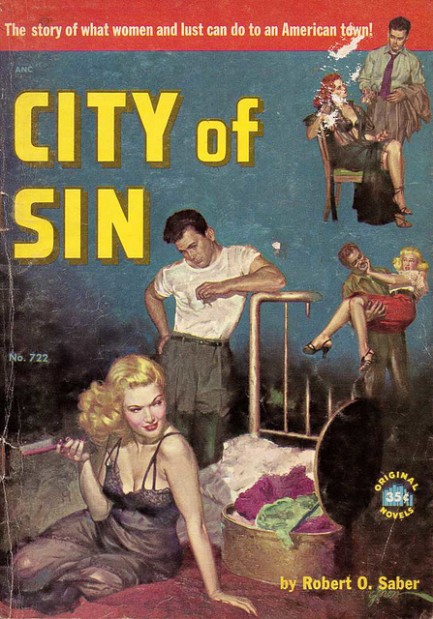 Above, great cover art for Robert O. Saber's Murder Honeymoon, a digest style paperback from the Australian imprint Phantom Books, 1953. The art originally fronted Saber's 1952 Original Novels thriller City of Sin, which you see at right, and was painted by the always amazing George Gross. Saber was aka Milton K. Ozaki, and we've featured him quite a bit because he seems to have always managed to have his books illustrated by the best. Though the art on these two books was basically the same, the novels were different. This is the first time we've come across identical art for separate novels by the same author. Above, great cover art for Robert O. Saber's Murder Honeymoon, a digest style paperback from the Australian imprint Phantom Books, 1953. The art originally fronted Saber's 1952 Original Novels thriller City of Sin, which you see at right, and was painted by the always amazing George Gross. Saber was aka Milton K. Ozaki, and we've featured him quite a bit because he seems to have always managed to have his books illustrated by the best. Though the art on these two books was basically the same, the novels were different. This is the first time we've come across identical art for separate novels by the same author.
 There. I shot him. Now will you get off my back about never helping you out around here? 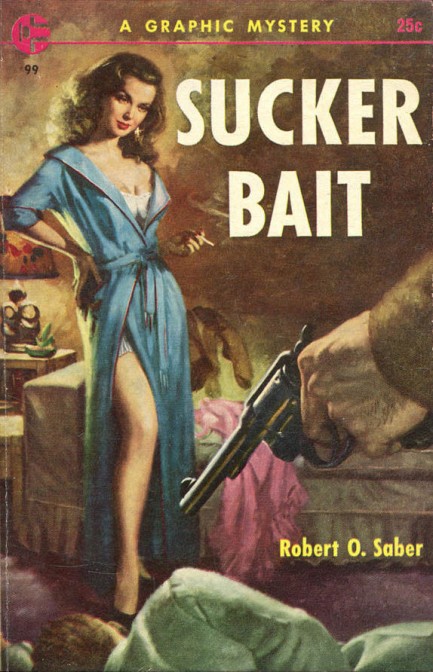
Above, the cover of Sucker Bait by Robert O. Saber, aka Milton K. Ozaki, 1955 from Graphic Books. Rich men pay $1,000 for entry into the Purple Door Club, where they procure the services of Chicago's most beautiful prostitutes, but also become targets for blackmailers. Hero Carl Good is accused of murdering one of the women and has to clear himself by finding the real killer. Good thing he's a detective. The cool cover art here is by Robert Maguire.
 Dress for the job you want, not the job you have. 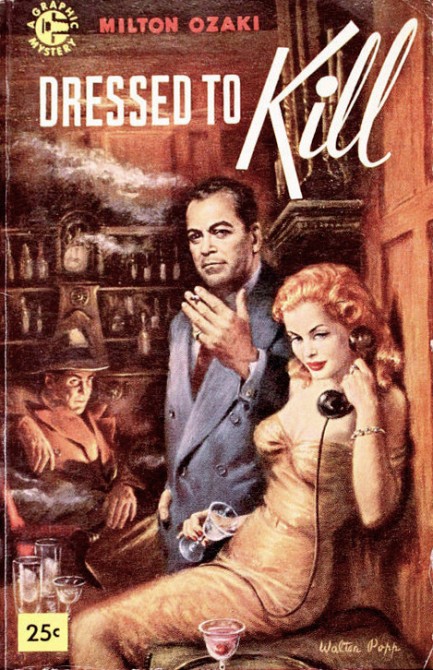
We love this Walter Popp cover art for Graphic Books' 1954 edition of Milton Ozaki's Dressed To Kill. He painted a couple of favorite covers, including A Time for Murder and New York Model, which we showed you here and here. In Dressed To Kill a private eye takes a job repossessing cars, and the first one he goes after is driven by a beautiful blonde and has a corpse in the trunk. The corpse of course leads to loot, and the loot of course attracts the villains—a bunch of Chicago mobsters. Generally well reviewed, but not Ozaki's best, according to most sources.
 The shape of bad things to come. 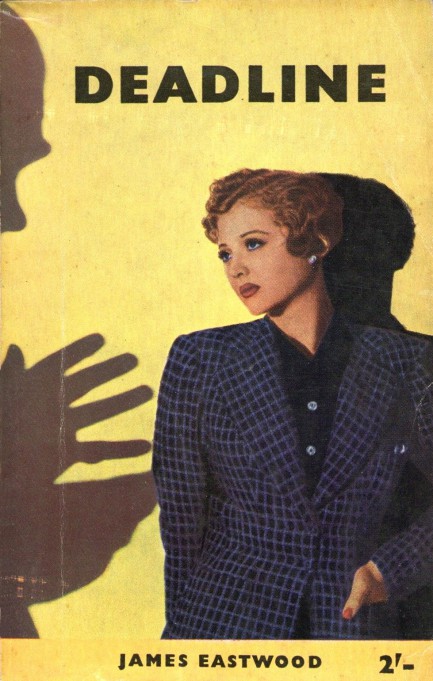
Above and below are assorted covers featuring yet another fun mid-century paperback art motif—the looming or threatening shadow. The covers are by the usual suspects—Rader, Phillips, Gross, Caroselli, Nik, as well as by artists whose work you see less often, such as Tony Carter’s brilliant cover for And Turned to Clay. That's actually a dust jacket, rather than a paperback front, but we couldn't leave it out. You’ll also notice French publishers really liked this theme. We’ll doubtless come across more, and as we do we’ll add to the collection. This is true of all our cover collections. For instance, our post featuring the Eiffel Tower has grown from fifteen to twenty-two examples, and our group of fronts with syringes has swelled from thirteen to twenty-six images. We have twenty-four twenty-six—see what we mean?—more shadow covers below, and thanks to all original uploaders.
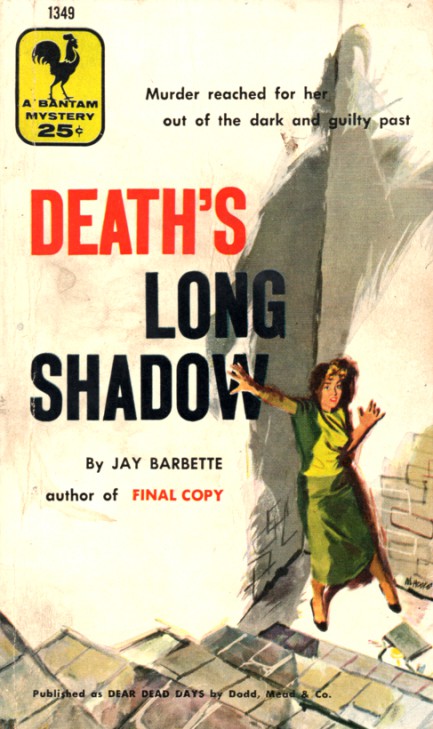 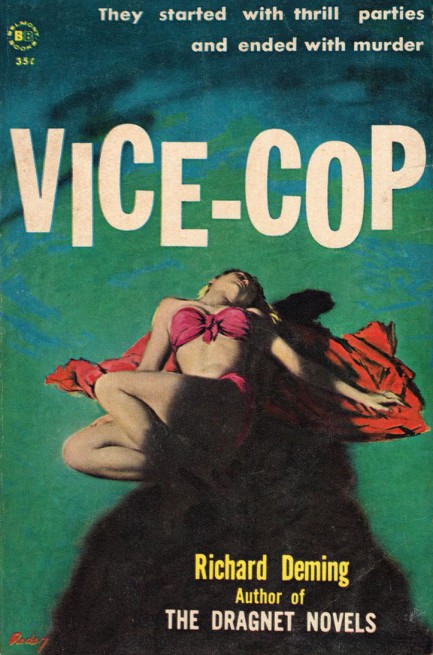 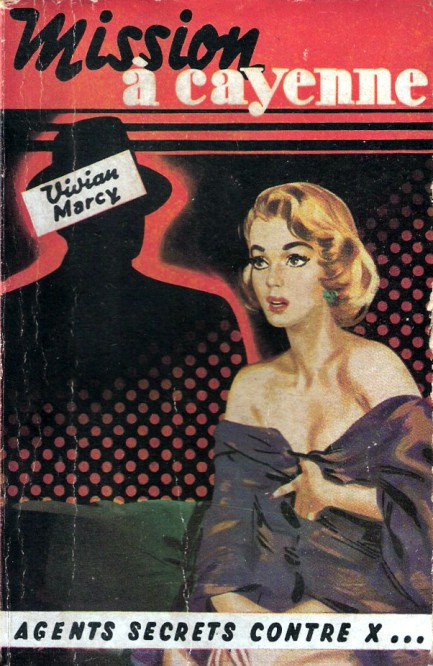 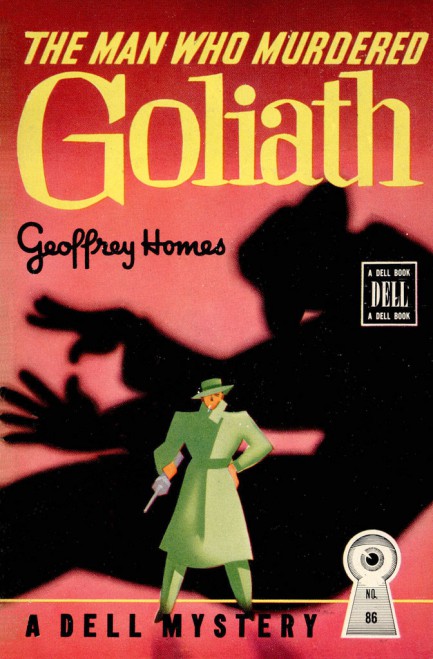 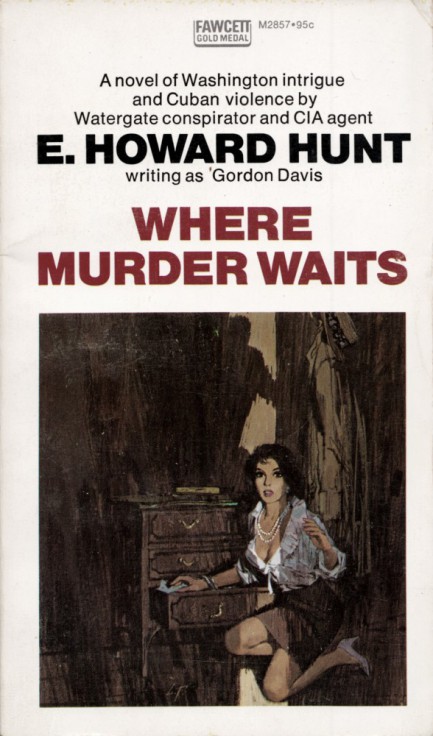 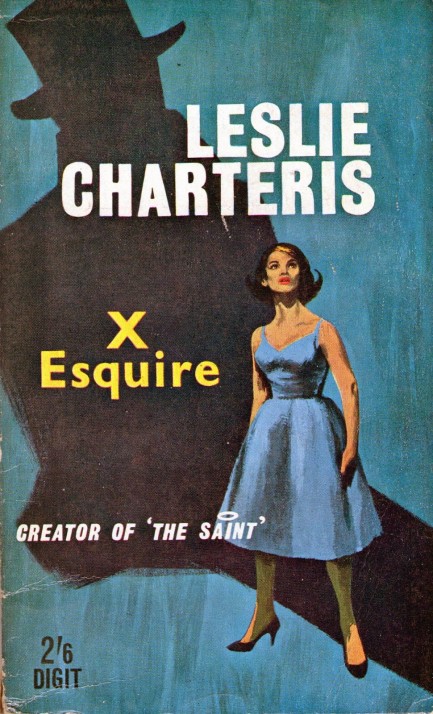 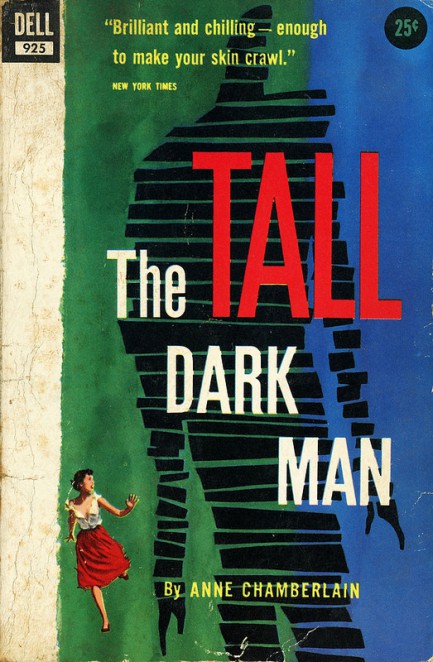 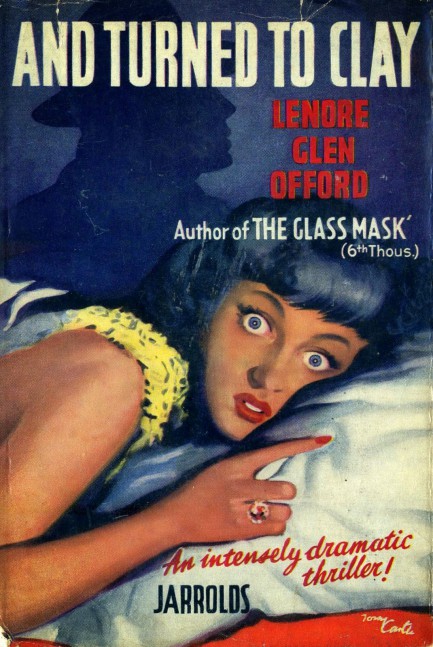 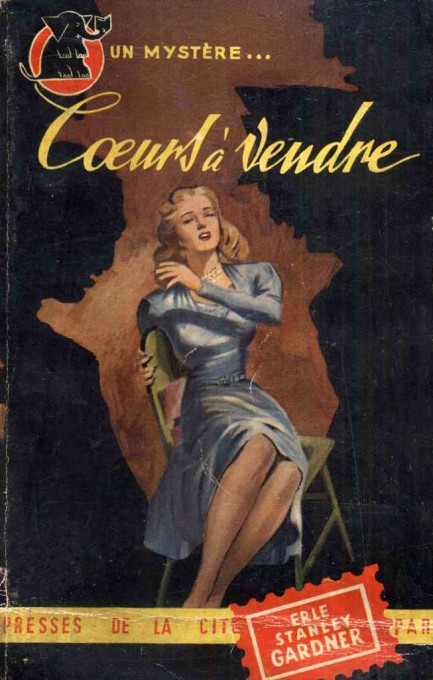 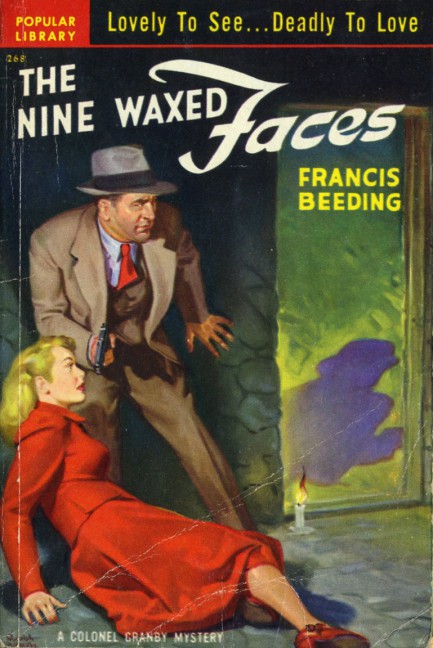 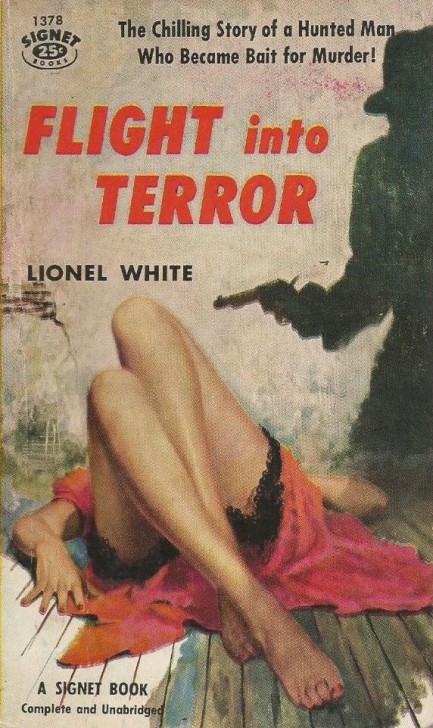 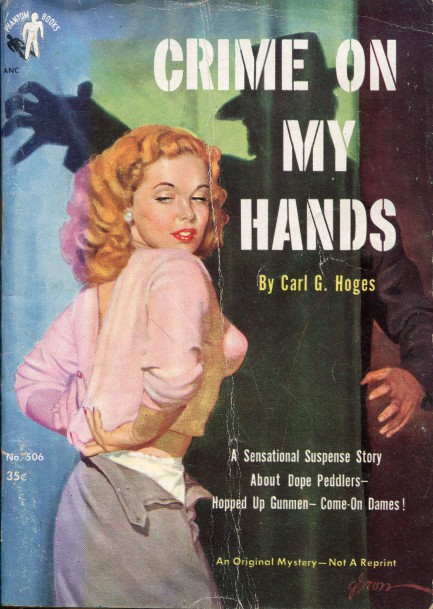 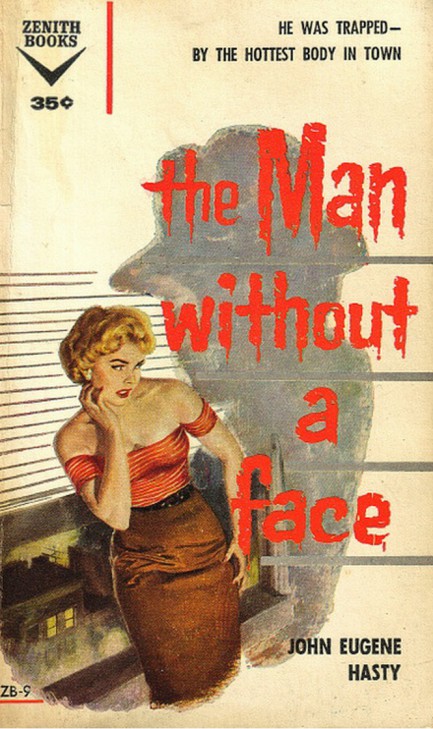 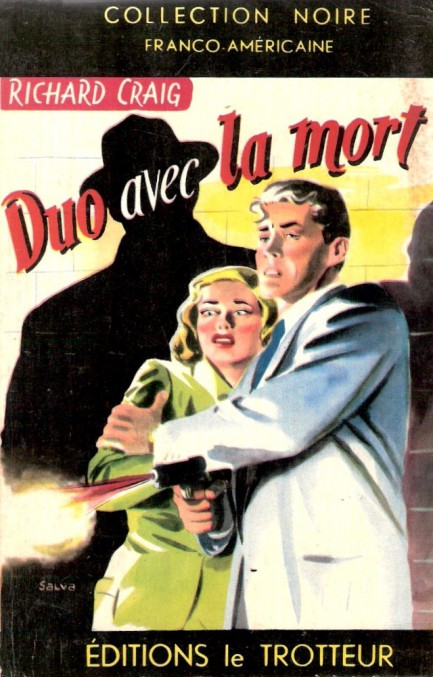 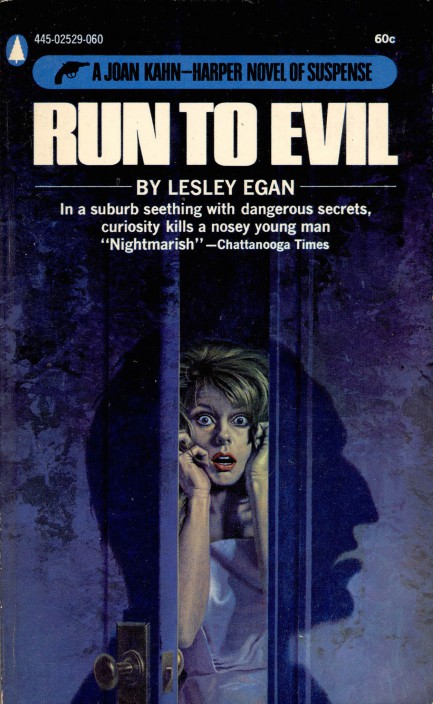 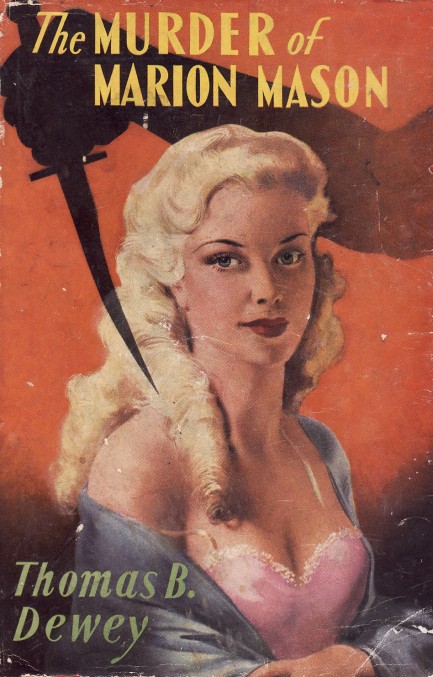 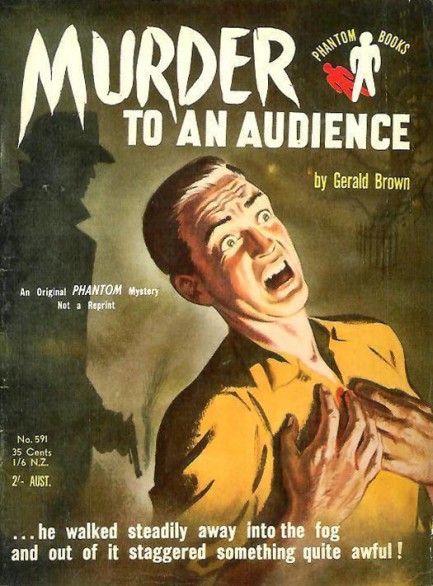 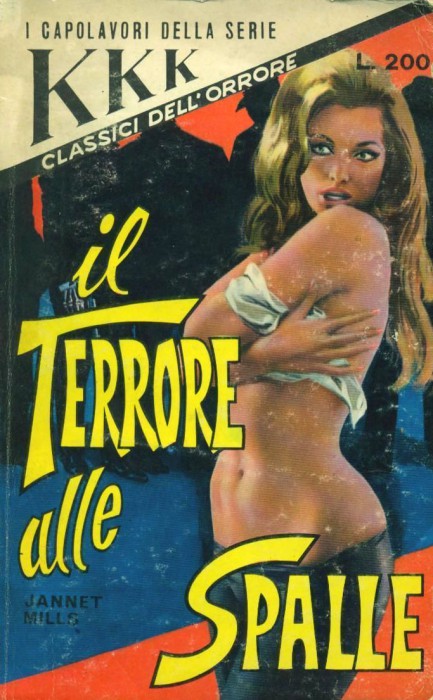 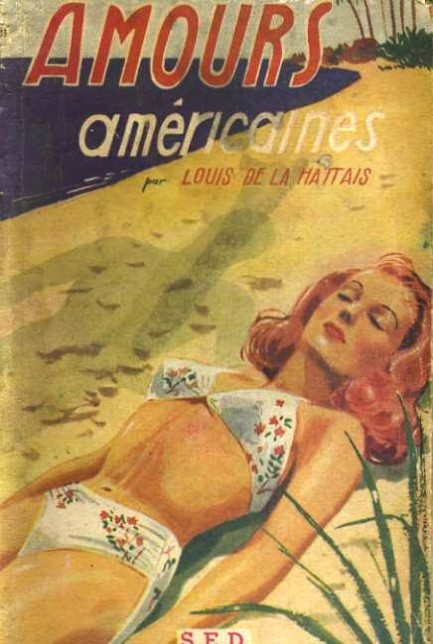 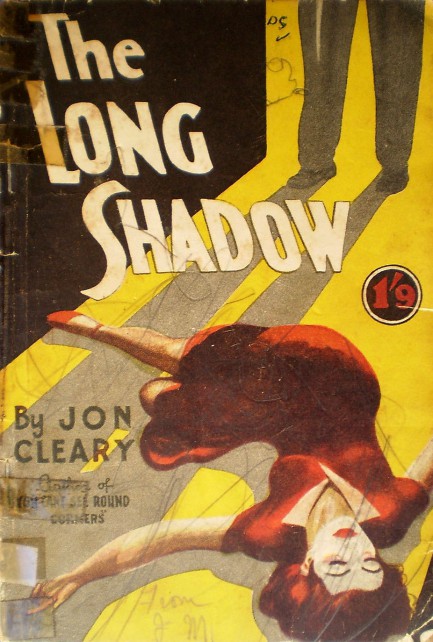 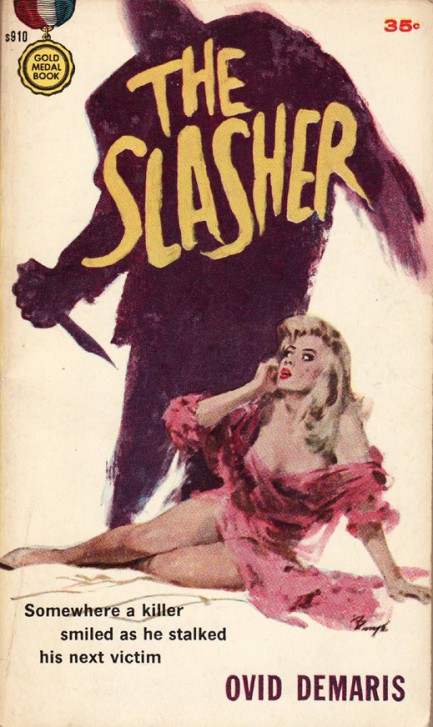 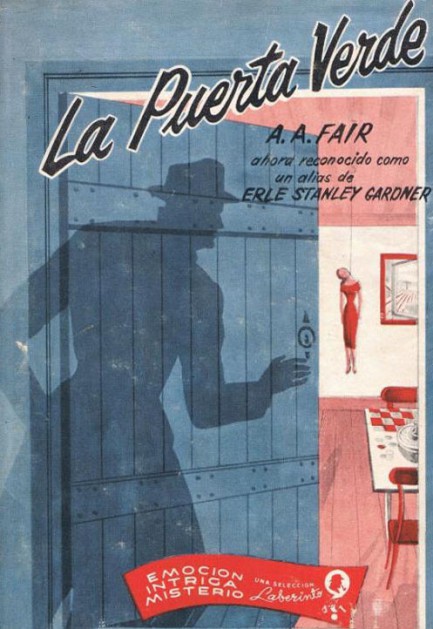 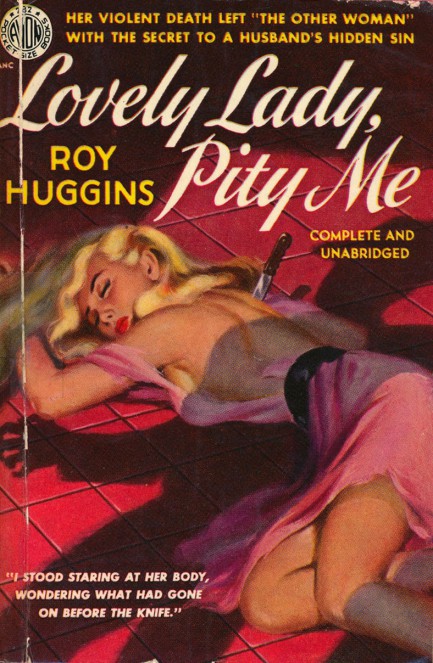 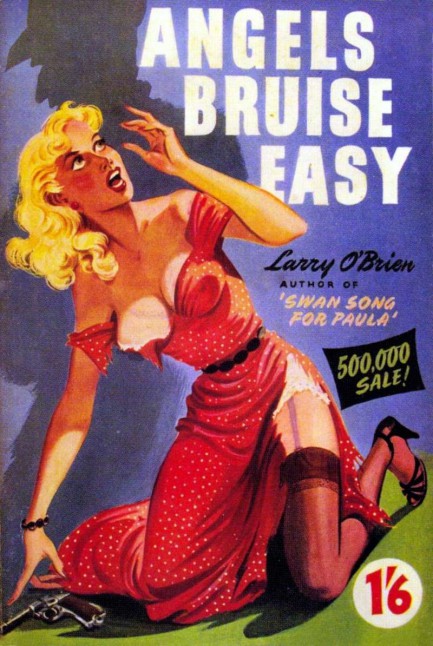 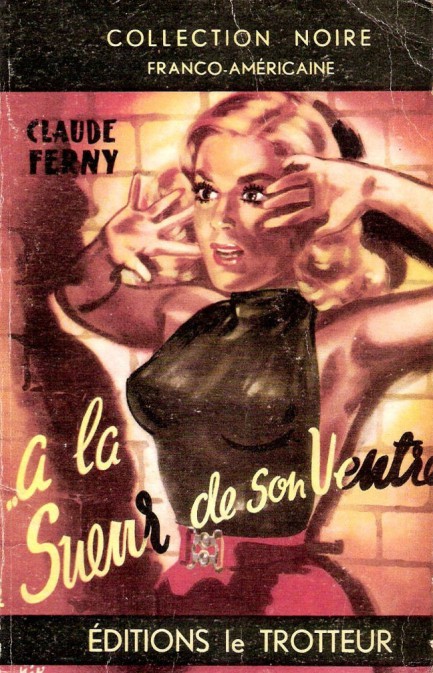 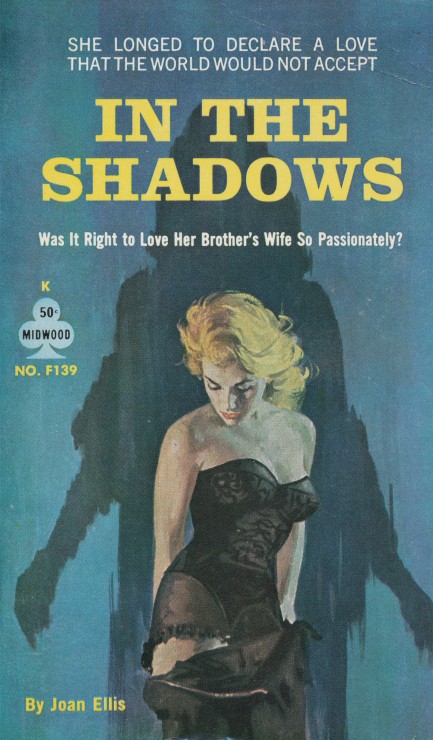 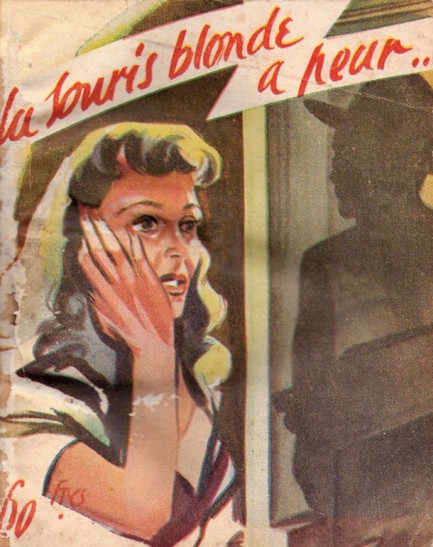 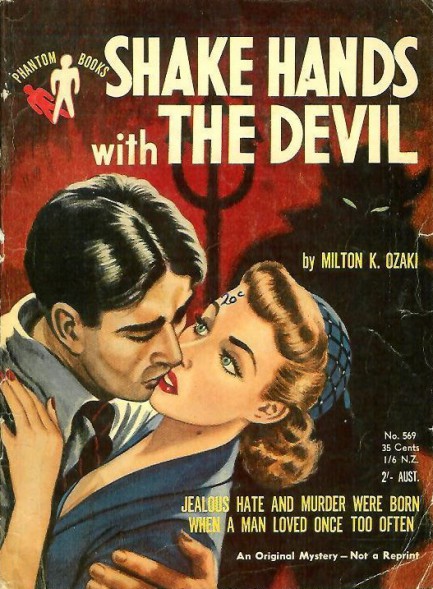 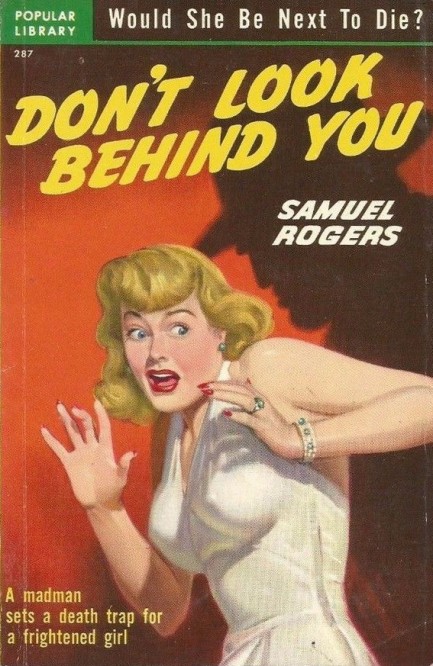 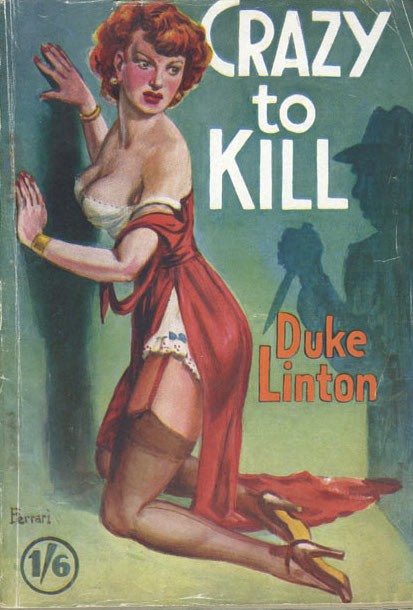
 Good boy. Now that you’ve got begging mastered let’s see how you do at playing dead. 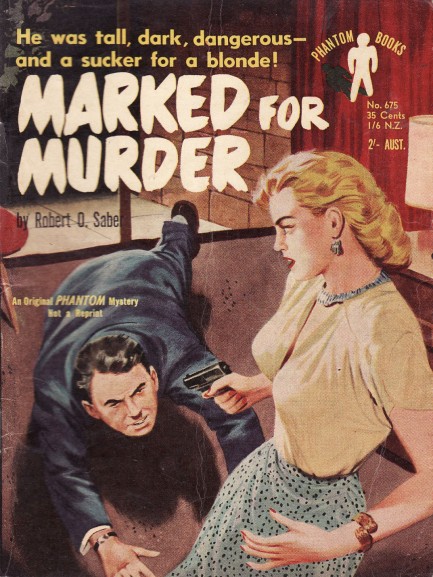
Above, Marked for Murder, written by Robert O. Saber, aka Milton K. Ozaki, published originally in 1955, with this edition from Australia’s Phantom Books appearing in 1956. Artist unknown.
 No, the other gun, silly. The one that matches my shoes. The one with the pearl inlay. Geez, men are so dense. 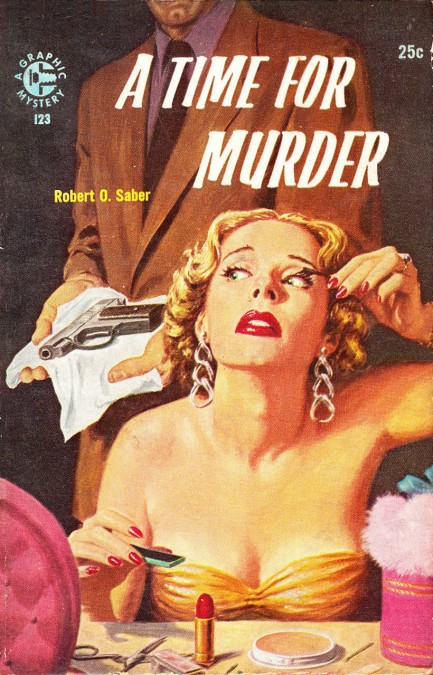
Above, the cover for Robert O. Saber’s, aka Milton K. Ozaki’s Chicago-based tale of crooked cops and robbers A Time for Murder, 1956. The artist here is Walter Popp.
 The cover changed substantially between editions but the weirdest bit stayed. 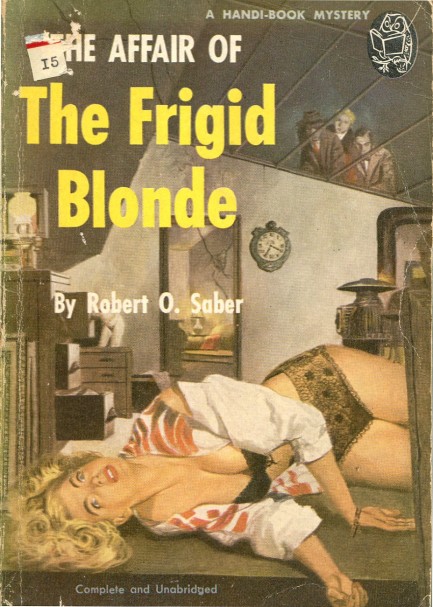
Remember our set of paperback covers featuring women who had died with their eyes agape? Here’s another to add to the list, which we saw over at Bill Crider’s blog. It’s Robert O. Saber’s The Affair of the Frigid Blonde, published in 1950 by the Handi-Books imprint of Quinn Publishing Company, Inc. This one is a bit strange, though, because of the three men seemingly hovering in mid-air to get a look through the deceased’s skylight. We chalk the bizarre perspective up to artistic license, or maybe we’re just not seeing it right. In fact, maybe she’s not even dead. Maybe she’s just in a state of shock. If we saw three guys floating above our skylight we’d fall into a stupor too. But no, the synopsis makes clear she’s dead. Anyway, Robert Saber was a pseudonym used by Milton K. Ozaki, who also published frequently under his own name. The book also appeared in Australia as The Deadly Blonde in 1953, published by the Australian imprint Phantom Books, with slightly altered art. Among other details, what looks like a robot but is probably supposed to be a lamp was removed from the background, a clock disappeared, a humanoid shadow at the far right edge vanished, and the woman’s undies were made less sheer (though the floating guys still get a pretty interesting angle). All in all, this is very instructive example of how cover art changes between editions of pulp paperbacks. We’ll dig up more examples later.
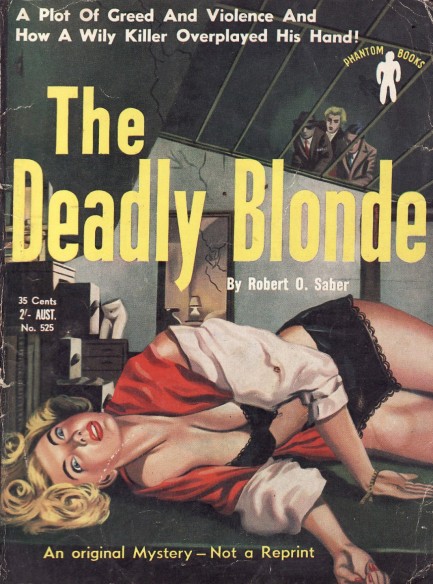
|
 |

The headlines that mattered yesteryear.
1945—Hitler Marries Braun
During the last days of the Third Reich, as Russia's Red Army closes in from the east, Adolf Hitler marries his long-time partner Eva Braun in a Berlin bunker during a brief civil ceremony witnessed by Joseph Goebbels and Martin Bormann. Both Hitler and Braun commit suicide the next day, and their corpses are burned in the Reich Chancellery garden. 1967—Ali Is Stripped of His Title
After refusing induction into the United States Army the day before due to religious reasons, Muhammad Ali is stripped of his heavyweight boxing title. He is found guilty of a felony in refusing to be drafted for service in Vietnam, but he does not serve prison time, and on June 28, 1971, the U.S. Supreme Court reverses his conviction. His stand against the war had made him a hated figure in mainstream America, but in the black community and the rest of the world he had become an icon. 1947—Heyerdahl Embarks on Kon-Tiki
Norwegian ethnographer and adventurer Thor Heyerdahl and his five man crew set out from Peru on a giant balsa wood raft called the Kon-Tiki in order to prove that Peruvian natives could have settled Polynesia. After a 101 day, 4,300 mile (8,000 km) journey, Kon-Tiki smashes into the reef at Raroia in the Tuamotu Islands on August 7, 1947, thus demonstrating that it is possible for a primitive craft to survive a Pacific crossing. 1989—Soviets Acknowledge Chernobyl Accident
After two days of rumors and denials the Soviet Union admits there was an accident at the Chernobyl nuclear power plant in Ukraine. Reactor number four had suffered a meltdown, sending a plume of radioactive fallout into the atmosphere and over an extensive geographical area. Today the abandoned radioactive area surrounding Chernobyl is rife with local wildlife and has been converted into a wildlife sanctuary, one of the largest in Europe. 1945—Mussolini Is Arrested
Italian dictator Benito Mussolini, his mistress Clara Petacci, and fifteen supporters are arrested by Italian partisans in Dongo, Italy while attempting to escape the region in the wake of the collapse of Mussolini's fascist government. The next day, Mussolini and his mistress are both executed, along with most of the members of their group. Their bodies are then trucked to Milan where they are hung upside down on meathooks from the roof of a gas station, then spat upon and stoned until they are unrecognizable.
|

|
|

It's easy. We have an uploader that makes it a snap. Use it to submit your art, text, header, and subhead. Your post can be funny, serious, or anything in between, as long as it's vintage pulp. You'll get a byline and experience the fleeting pride of free authorship. We'll edit your post for typos, but the rest is up to you. Click here to give us your best shot.

|
|




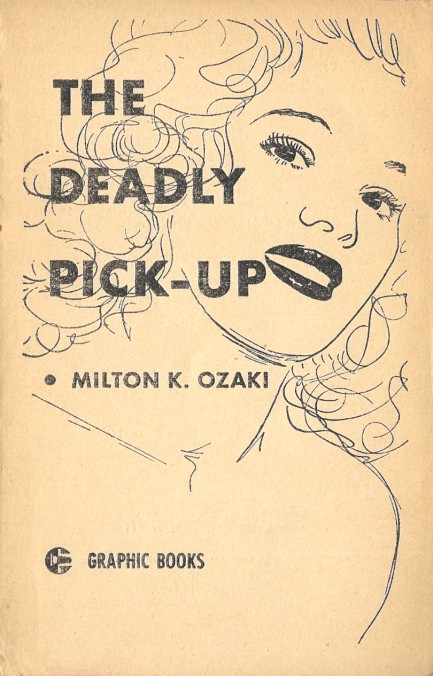
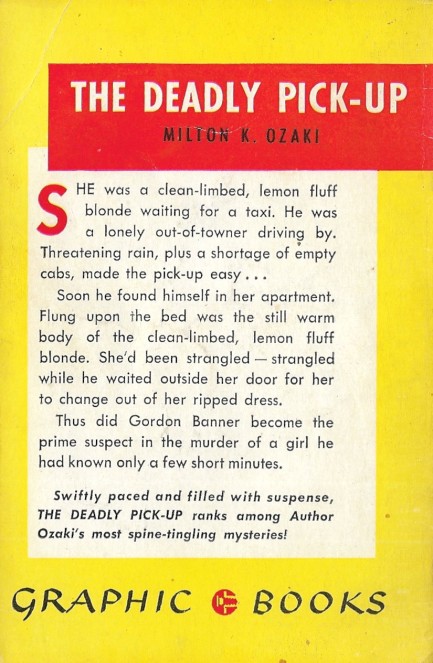




 Above, great cover art for Robert O. Saber's Murder Honeymoon, a digest style paperback from the Australian imprint Phantom Books, 1953. The art originally fronted Saber's 1952 Original Novels thriller City of Sin, which you see at right, and was painted by the always amazing George Gross. Saber was aka Milton K. Ozaki, and we've featured him quite a bit because he seems to have always managed to have his books illustrated by the best. Though the art on these two books was basically the same, the novels were different. This is the first time we've come across identical art for separate novels by the same author.
Above, great cover art for Robert O. Saber's Murder Honeymoon, a digest style paperback from the Australian imprint Phantom Books, 1953. The art originally fronted Saber's 1952 Original Novels thriller City of Sin, which you see at right, and was painted by the always amazing George Gross. Saber was aka Milton K. Ozaki, and we've featured him quite a bit because he seems to have always managed to have his books illustrated by the best. Though the art on these two books was basically the same, the novels were different. This is the first time we've come across identical art for separate novels by the same author.














































































































